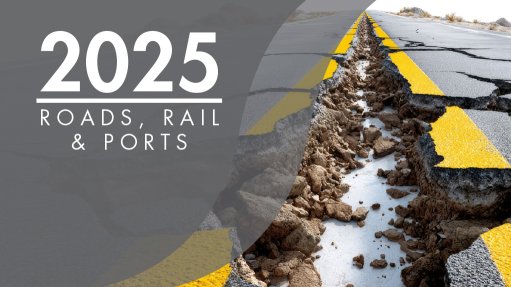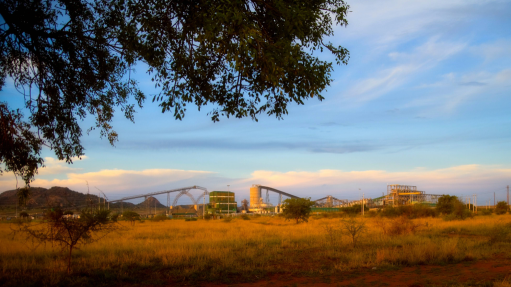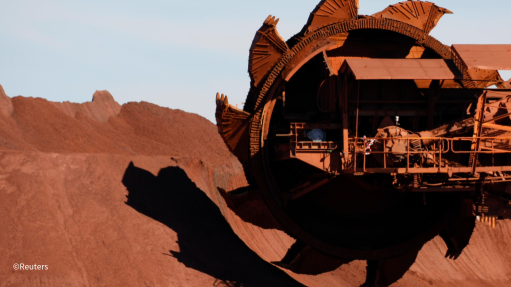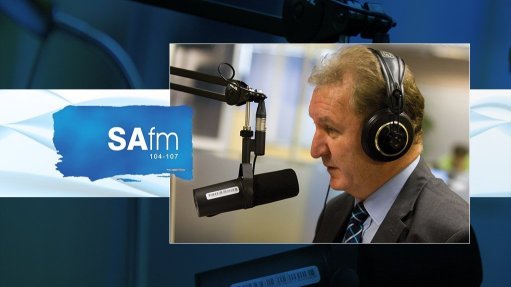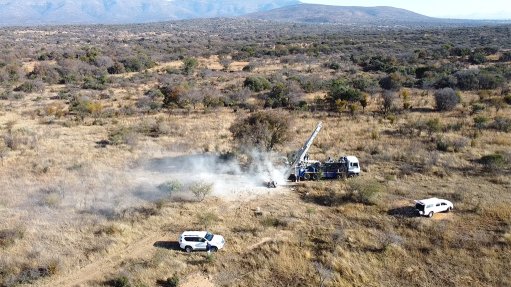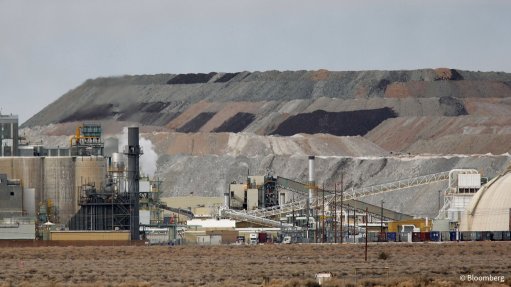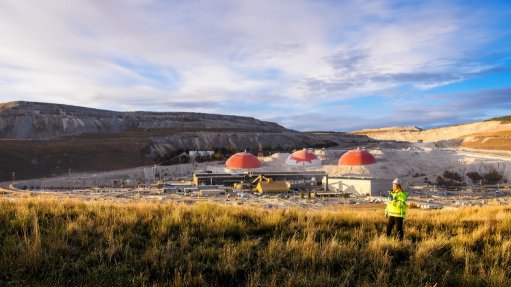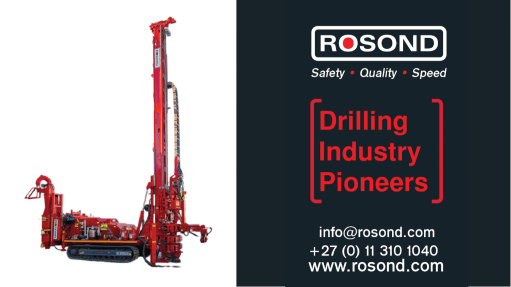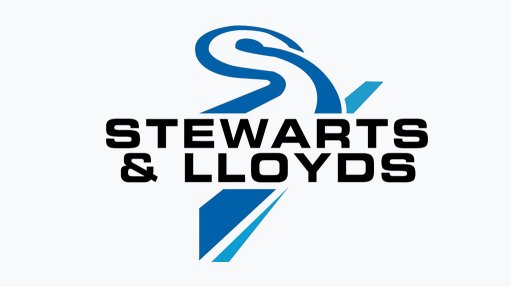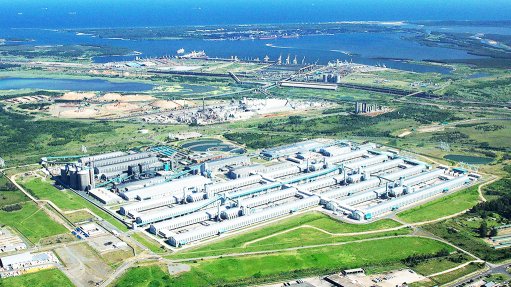Southern African coking coal tailings could be profitably reprocessed, study finds
Southern African coking coal tailings that have been exposed on the surface for more than a decade could be profitably reprocessed, according to a study presented by Enprotec principal technology development manager Tobie Loftus at the twenty-first International Coal Preparation Conference, in Sun City, on October 14.
The research examined ways to recover saleable coal from tailings, a practice common in gold mining but rare in coal.
Loftus said the mining industry had “strategically shifted away from wet tailings storage facilities (TSFs) and also focused on the efficient management of tailings, and that has driven a lot of dry deposition alternatives as well, and also led to the decommissioning of quite a few facilities".
He added that, in some commodities, including coking coal, remining and reprocessing tailings to generate saleable product was increasingly being considered.
The study focused on a Southern African coking coal resource that had been mined for many years. Loftus explained that the ore had been exposed for 10 to 15 years, resulting in oxidation of the mineral surface.
“That weathering aspect really does make it quite complicated to potentially float that out,” he said, noting that prolonged oxidation affects coal surfaces in ways that could complicate recovery.
Loftus outlined that particle size distribution was a key factor.
“The finer you go, the higher that area-to-volume ratio is, and the degree of oxidation is actually quite significant. So, in terms of flotation performance on that sort of material, it doesn't necessarily impact the collision stage of flotation. But, in terms of attachment and detachment, the probability of that does go up quite significantly,” he said.
To overcome these challenges, the study examined mechanical surface preparation, chemical additives and extended residence times. Loftus noted that ultrafine coal flotation required careful energy input.
“Energy input is quite important. So it is suggested to also look at slightly higher energy input for that,” he explained.
The study aimed to define a preliminary flowsheet and validate it at a laboratory scale, to analyse feed material, processing characteristics and flotation kinetics. It also included an assessment of projected cash flows, financial performance and sensitivity testing against market scenarios, as well as a review of environmental and sustainability impacts.
Samples were collected from near-surface points, which Loftus acknowledged was not ideal. He said future work would involve core samples and pilot-scale testing to strengthen results.
The laboratory tests characterised feed material, evaluated flotation performance, screened reagents, optimised processing conditions and assessed the impact of scrubbing on quality and yield. Settling and filtration tests were also conducted to inform equipment selection.
Loftus explained that flotation tests targeted combustible recovery, discounting ash content and aimed for an ash yield of 8% to 10% to meet client requirements.
“We also parameterised the particle size distribution (PSD) feeding the system with Rosin-Rammler, and we also had a look at settling rates, and fitted exponential decay functions to parameterise that as well,” he said.
The Rosin-Rammler distribution is a mathematical model used to describe PSD. It’s commonly applied in mineral processing and mining to characterise how particles are spread across different size ranges.
A modified version of the Kelsall equation was applied to model flotation behaviour and compared with previous ores. The Kelsall equation is a mathematical model used to describe flotation kinetics. It allows engineers to predict the cumulative recovery of particles as a function of time and to design flotation circuits more efficiently.
The feed material showed a d₈₀ of about 300 µm, with coarser particles largely non-coal and excluded from flotation. About 30% of the material fell below 38 µm and was included in testing.
Two reagent suites were compared and Loftus noted that one suite performed slightly better.
Scrubbing for ten minutes in the Denver apparatus – a laboratory flotation cell – improved yield while maintaining low ash levels, demonstrating feasibility for the project.
Kinetic testing showed significant yield improvements as reagent dosage increased, but benefits plateaued beyond 900 g/t, balancing operational costs and performance. Settling tests indicated tailings settled slightly slower than feed material, while filtration tests measured tailings moisture around 20% and concentrate moisture at 17% to 19%.
Loftus said the proposed flowsheet began with hydraulic mining, followed by scrubbing and removal of cramp material, classification, and feed thickening for process stability.
In this scenario, flotation is simplified, using primary and secondary roughers before dry tailings handling and product filtration, with potential downstream agglomeration.
Economic analysis highlighted coking coal price and flotation yield as the most influential variables.
Loftus pointed out that the study suggested that the project could deliver positive cash flows under a range of market scenarios. He also noted water recovery as a side benefit.
“When you do process that tailings material, we ended up, from a mass balance perspective, recovering around 18 m³/h of water that was entrained in that tailings facility,” he said.
However, Loftus cautioned that the study remained at an early stage and that further testing was required.
“This study is still very much early stages, and we're keen to further that by doing more elaborative testwork, particularly on a batch pilot scale. So we will be getting a bulk sample in quite soon to do that testwork, to firm up the numbers and to see if it makes sense on a full-scale basis,” Loftus said.
Article Enquiry
Email Article
Save Article
Feedback
To advertise email advertising@creamermedia.co.za or click here
Press Office
Announcements
What's On
Subscribe to improve your user experience...
Option 1 (equivalent of R125 a month):
Receive a weekly copy of Creamer Media's Engineering News & Mining Weekly magazine
(print copy for those in South Africa and e-magazine for those outside of South Africa)
Receive daily email newsletters
Access to full search results
Access archive of magazine back copies
Access to Projects in Progress
Access to ONE Research Report of your choice in PDF format
Option 2 (equivalent of R375 a month):
All benefits from Option 1
PLUS
Access to Creamer Media's Research Channel Africa for ALL Research Reports, in PDF format, on various industrial and mining sectors
including Electricity; Water; Energy Transition; Hydrogen; Roads, Rail and Ports; Coal; Gold; Platinum; Battery Metals; etc.
Already a subscriber?
Forgotten your password?
Receive weekly copy of Creamer Media's Engineering News & Mining Weekly magazine (print copy for those in South Africa and e-magazine for those outside of South Africa)
➕
Recieve daily email newsletters
➕
Access to full search results
➕
Access archive of magazine back copies
➕
Access to Projects in Progress
➕
Access to ONE Research Report of your choice in PDF format
RESEARCH CHANNEL AFRICA
R4500 (equivalent of R375 a month)
SUBSCRIBEAll benefits from Option 1
➕
Access to Creamer Media's Research Channel Africa for ALL Research Reports on various industrial and mining sectors, in PDF format, including on:
Electricity
➕
Water
➕
Energy Transition
➕
Hydrogen
➕
Roads, Rail and Ports
➕
Coal
➕
Gold
➕
Platinum
➕
Battery Metals
➕
etc.
Receive all benefits from Option 1 or Option 2 delivered to numerous people at your company
➕
Multiple User names and Passwords for simultaneous log-ins
➕
Intranet integration access to all in your organisation




